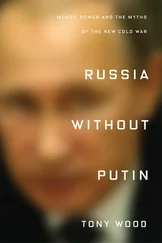1 ...6 7 8 10 11 12 ...24 Tracing back to the end of WW2, as the Cold War was getting under way, the world was unwittingly entering into a Financial Cold War , in which it has been engaged ever since. The opening shot of this war was the Bretton Woods Agreement of 1944, which lodged the US dollar at the centre of the global monetary system. Financial systems, like all ecosystems, thrive on equilibrium. The dollar's centrality in the financial order created by Bretton Woods spawned an imbalance that has since grown and multiplied. The Financial Cold War has played out over two key battlefronts.
The first has been the division of resources between countries. The dollar-centric global financial system has created international demand for dollars that has provided the US with low-cost capital without any currency mis-match risk. Other countries, notably emerging markets that have needed to insure against periodic dollar exchange rate volatility, have borne a high cost for this. However, to keep the world supplied with sufficient dollar liquidity, the US was required to run continual balance of payments deficits. The lack of any structural mechanism for revaluing the currencies of countries with persistent large balance of payments surpluses has forced America to become the world's ‘consumer of last resort’. This has transferred productive capacity to other countries and, unless the US is able to constantly expand its economy faster than its cumulative balance of payments deficits, the rising debt burden will drag on future growth. It was fortuitous that America's lead in the information technology revolution allowed it to maintain strong growth with low inflation for a quarter of a century. However, in recent years, rapidly rising public debt has given rise to concerns over America's long-term financial stability, exacerbated global financial imbalances, and created tensions with large foreign holders of US public debt, including China, due to the risk of monetary inflation.
The second battlefront has been over the distribution of wealth within countries. The billionaire Warren Buffett candidly told a CNN interviewer in 2011 that ‘there's been class warfare going on for the last 20 years, and my class has won’. 22 He was right. Structural overvaluation of the dollar due to the level of foreign demand for the currency has weakened the competitiveness of American exports in international markets. The wealthy have benefited disproportionately from the migration of manufacturing to lower-cost centres of production, while US workers have paid the price. This is not just a matter of monetary policy, however. Extreme ideological leanings towards free market policies since the 1980s have benefited wealthy and corporate interests through a range of policies, including lower taxation and less rigorous antitrust enforcement. The negative social impacts have been far-reaching. Rising wealth concentration has dragged on American economic vibrancy and undermined the legitimacy of the political system.
China's rapid growth over the past four decades, and the consequent improvement in living standards, has insulated it from this second battlefront so far. In unleashing this growth, a number of highly talented statesmen have had to balance a great many conflicting interests. However, as it has pursued market-oriented reforms, growing wealth inequality in China is also generating greater social tensions. As economic growth slows from the heady rates of earlier years and demographic pressures from the country's aging population continue to rise, these tensions will only grow more acute. China's governance structure and economic model, credited with fostering the country's development during the early years of its economic transformation, may now be holding it back from adapting to new realities.
At its most fundamental level, therefore, the Financial Cold War is the invisible conflict, embedded in national financial policies and the structure of international financial markets, over the distribution of wealth. Worryingly, however, this has been spilling over into wider conflicts.
In the face of growing domestic social tensions arising from wealth and income inequality, the political elites in both countries have resorted to populist nationalism. This is discussed further in Chapter 6. The result has been escalating Sino-US tensions, with the Financial Cold War recently heating up in the form of a widening geopolitical clash being played out in the financial and economic spheres.
Conventionally, there are considered to be seven economic tools suited to geopolitical application: trade policy; investment policy; economic and financial sanctions; financial and monetary policy; economic aid; cyber; and energy and commodities. 23 The latter two have certainly been applied in Sino-US geopolitical context but, since these verge on the domain of conventional warfare, they fall outside the scope of this volume, which is focused on the financial and economic dimensions of the relationship that are stoking tensions. Nevertheless, as highlighted in this book, each of the other tools in the economic arsenal has been mobilised in an escalating Sino-US conflict.
The trade war launched by Donald Trump in early 2018 has been the focus of much attention. However, this was neither the opening salvo in the geo-economic clash between the US and China, nor is trade even the most pertinent battlefront. While trade flows were at the forefront of policymakers’ thinking at Bretton Woods, 24 the huge growth in global financial markets since then means that today the trade in goods and services has been vastly superseded by financial flows, which now account for roughly 90 percent of cross-border capital movements. 25 It is therefore to the capital markets that we must look to fully understand the scope of the geo-economic conflict between the two countries.
As the geo-economic campaign between China and the US unfolds, we face a substantial risk that this will spill over into broader conflicts that could result in disaster for both nations and the rest of the world.
The Financial Path Out of Conflict
The evolution of markets has been a major civilising force for humanity. Financial markets provide a vital means for capital to be allocated to where it can be most productively used and have enabled the sharing of risks, such that mankind has been able to undertake giant ventures beyond the capacity of any individual or small group. This has contributed to a reduction in conflict and to huge advances for humankind.
Nevertheless, markets operate within institutional frameworks and are subject to the incentives that they create. When policies are calibrated to encourage competition and foster enterprise, markets can be powerful drivers of innovation and progress. Financial markets are complex ecosystems, however. Poorly designed incentive structures and lax regulatory enforcement can give rise to serious imbalances. When imbalances occur, their impact can stretch far beyond the financial sphere, with significant social, political and diplomatic repercussions.
Since finding resolutions must begin with understanding, this book reviews in detail the history of how the global financial system today has come about, as well as the ideological and practical underpinnings of different financial and economic policies.
Part One of the book focuses on the US. It first gives an account of how the dollar came to dominate the global financial system, and explains the policies, regulations, infrastructure and market conventions that perpetuate the dollar's global role. It then questions whether the costs of that role to both the US and the rest of the world may now outweigh the benefits.
Part Two focuses on China. Given the very long historical perspective through which Chinese policymakers frame policy, it is necessary to have a broad perspective of Chinese history to appreciate the context of today's financial and economic policies. This part therefore first takes readers on a whistle-stop journey through six centuries of Chinese history, from the height of China's relative global economic power during the Ming Dynasty (明朝, 1368–1644) through to the ravages of the Cultural Revolution (文化大革命, 1966–1976) and the country's economic climb back in the decades since. It then goes on to give an account of the development of China's modern financial markets and examines the financial and economic challenges facing the country today.
Читать дальше












